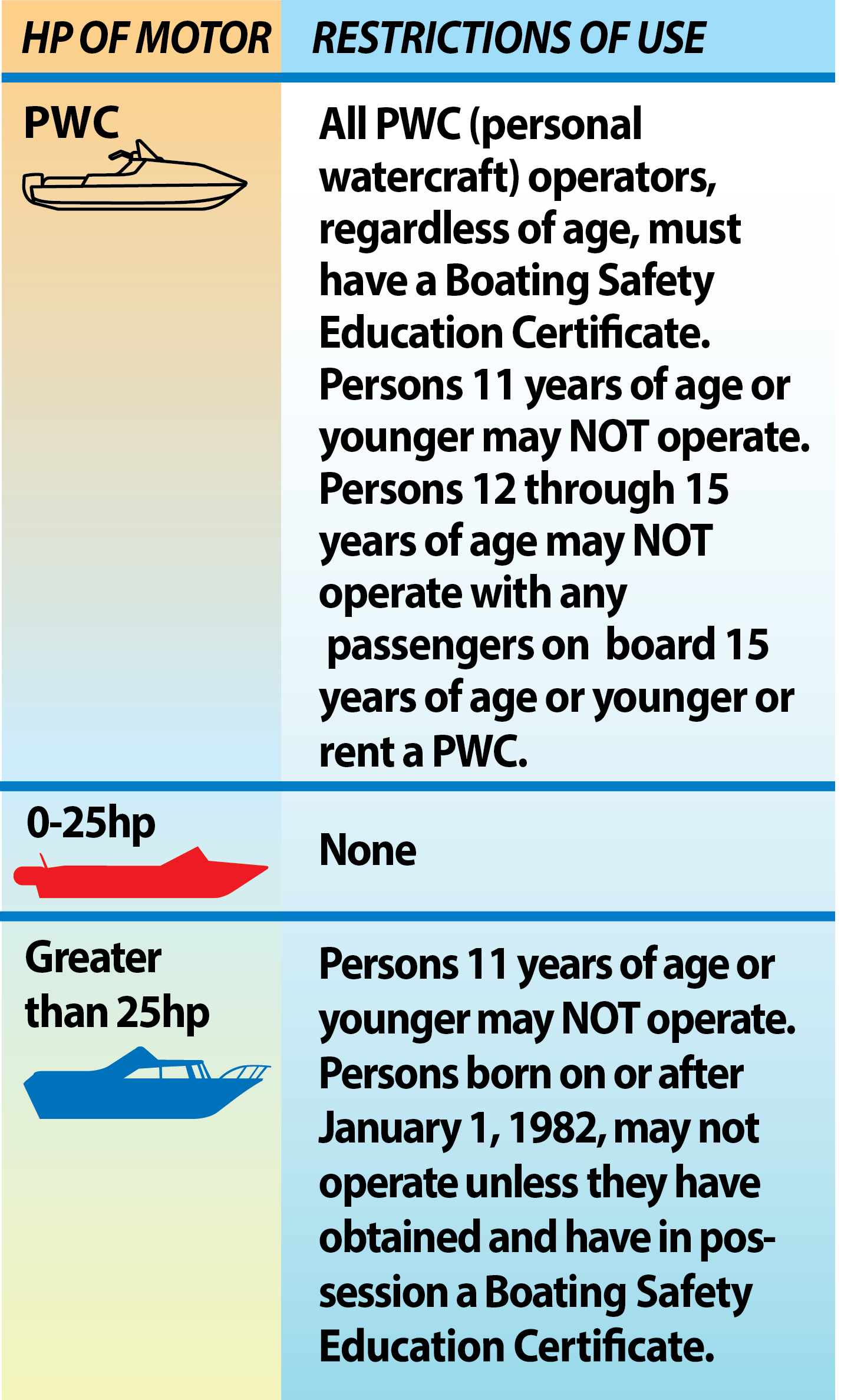GET STARTED WITH POWER BOATING
Powerboating offers exciting opportunities for the recreational boater, whether to reach fishing not found on shorelines or to explore the Commonwealth's more than 200,000 acres of boatable waters. Enjoy powerboating by knowing how to operate, maneuver and navigate your boat so that all are safe on the water.
BOAT OPERATORS MUST
Minimum Age for Boat Operators

Before You Get on the Water
- Make sure a life jacket in working order and correct for size and activity is available for each person on board.
- Check the weather forecast for
where and when you are boating.
- Have a float plan to let others know your trip.
- Ensure the boat is in safe, operable condition.
- Make everyone on board understand the safety rules and where to find safety equipment.
- Know how to navigate and what the navigation aids mean.
- Know the hazards on the water and how to avoid them.
- Keep a lookout and minimize distractions while underway.
Equipment and Maintenance
To ensure your boat is in peak working order on the water, practice regular and preventative boat maintenance including frequent equipment inspections (life jackets, throwable devices). Get more on maintenance checks for your boat and its equipment from the Boating Handbook.
Maneuvering
Know launch and retrieve procedures and have everything ready before you back down the ramp.

Boarding
Wearing a life jacket when boarding is a
common sense safety precaution.
Small boats
Small boats require special care for balancing when boarding, loading/unloading, and moving about. Take care to distribute weight evenly and do not exceed capacity. Maintain three points
of contact anytime moving about
the boat. Keeping your weight low and centered helps with stability on a small boat.
Boat Trim
Keep the boat from
listing (leaning to one side) by distributing
weight equally from side to side. Avoid sudden, sharp
turns and never exceed the boat’s capacity.
Boat Handling
All boats handle differently. Get hands-on practice with a capable
teacher to become proficient. A motorboat is most easily maneuvered
going against the current or wind. A boat moving with the current must go faster
than the speed of the current to maintain control
and maneuverability. Boats do not have brakes.
To reduce speed quickly, put the boat in reverse and apply power. Stopping in this
manner requires practice to avoid water washing
in over the stern. Consult the owner’s manual for
proper procedures.
Docking and Departing
Learning to dock and depart requires
practice with a capable teacher. Docking is also impacted by conditions like current, wind and waves. Depending on the situation, docking procedures vary. Fenders, mooring lines, a boat hook,
and a heaving line should be ready. The approach
to the dock should be planned. For more on docking procedures consult the Boating Handbook.
Proper Lookout
Boat operators must maintain a proper lookout at all times. Collisions
and other types of accidents can be avoided by
scanning all around the boat for swimmers, other
boats, and obstructions. Listening for dangerous situations is also a part of maintaining a proper
lookout. Passengers should be asked to assist.
Anchoring
Anchoring
is an essential boating skill and can be an important safety device in an emergency. Become proficient in anchoring and make sure anchor and line are stored in an easily accessible place. Learn more in the Boating Handbook.